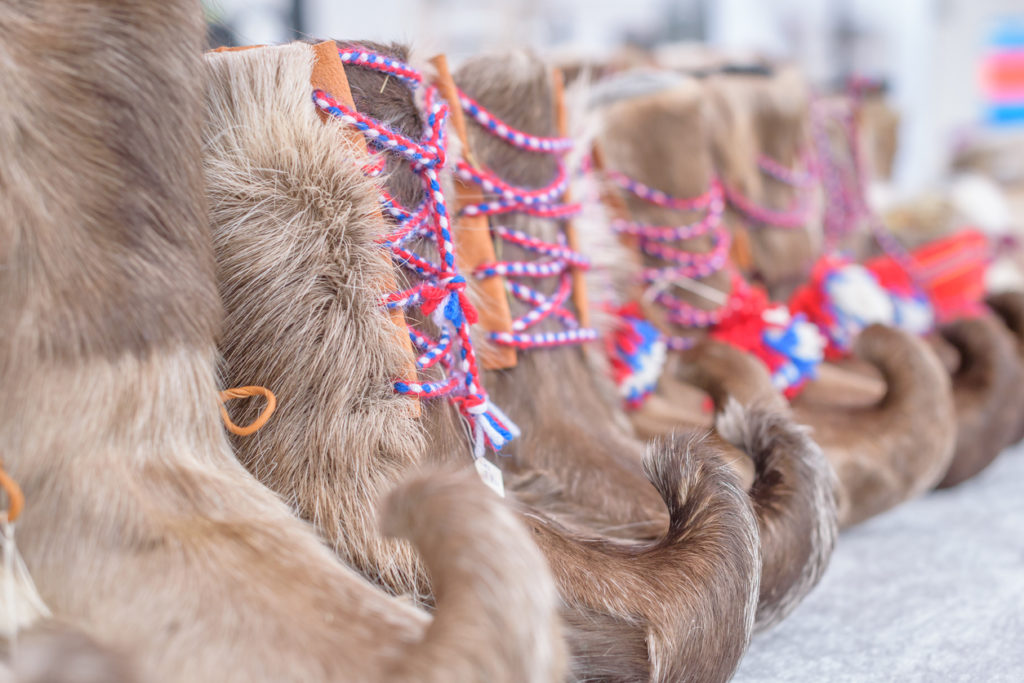What Are the Main Traditions of Sami Culture?
Introduction to Sami Culture
The Sami people, indigenous to the northern parts of Norway, Sweden, Finland, and the Kola Peninsula of Russia, have a rich cultural heritage that has been preserved and passed down through generations. Known for their deep connection to nature and unique traditions, the Sami culture offers a fascinating glimpse into the lives of one of Europe’s oldest indigenous communities. At VALO Finland, we aim to provide our guests with an immersive experience that allows them to explore and appreciate the vibrant Sami culture during their stay in Lapland.
In this blog post, we will delve into the main traditions of Sami culture, covering aspects such as traditional clothing and handicrafts, language and oral traditions, diet and culinary practices, and festivals and celebrations. By understanding these elements, you can gain a deeper appreciation for the Sami way of life and enrich your visit to Lapland.
Traditional Sami Clothing and Handicrafts
One of the most distinctive features of Sami culture is their traditional clothing, known as “gákti.” The gákti is not only a practical garment designed to withstand the harsh Arctic climate but also a symbol of identity and heritage. Typically made from reindeer hide, wool, and cotton, the gákti is adorned with intricate patterns and vibrant colours that vary depending on the region and the wearer’s family. Each design element holds cultural significance, often indicating the wearer’s marital status, age, and place of origin.
In addition to clothing, the Sami are renowned for their handicrafts, known as “duodji.” These crafts include items such as knives, wooden cups (kuksa), and woven bands, all of which are made using traditional techniques passed down through generations. The craftsmanship involved in creating these items is a testament to the Sami’s deep connection to their environment and their resourcefulness in utilising natural materials.
The Sami Language and Oral Traditions
The Sami people speak several languages, collectively known as the Sami languages, which belong to the Uralic language family. These languages are an integral part of Sami identity and cultural heritage. Despite facing challenges such as language suppression and assimilation policies in the past, efforts are being made to revitalise and preserve the Sami languages through education and cultural initiatives.
Oral traditions play a crucial role in Sami culture, with storytelling, joik (a traditional form of song), and poetry being key components. These oral traditions serve as a means of preserving history, conveying moral lessons, and strengthening community bonds. Joik, in particular, is a unique and expressive form of music that reflects the Sami’s deep connection to nature and their spiritual beliefs.
Sami Diet and Culinary Traditions
The Sami diet is closely tied to their environment and traditional livelihoods, such as reindeer herding, fishing, and foraging. Reindeer meat is a staple in Sami cuisine, often prepared in various ways, including smoking, drying, and stewing. Fish, particularly salmon and trout, also play a significant role in their diet, with methods such as smoking and curing being commonly used to preserve the catch.
Foraging for wild berries and herbs is another important aspect of Sami culinary traditions. The long summer days in the Arctic region provide ideal conditions for the growth of berries such as cloudberries, lingonberries, and blueberries. These berries are often used in jams, desserts, and as accompaniments to savoury dishes. The Sami’s deep knowledge of their natural surroundings allows them to make the most of the resources available to them, resulting in a diet that is both nutritious and sustainable.
Festivals and Celebrations in Sami Culture
Festivals and celebrations are an integral part of Sami culture, providing opportunities for the community to come together, celebrate their heritage, and pass on traditions to younger generations. One of the most significant events in the Sami calendar is the Sámi National Day, celebrated on February 6th. This day marks the anniversary of the first Sami congress held in 1917 and is a time for Sami people to celebrate their culture, language, and history through various activities, including traditional music, dance, and food.
Reindeer racing is another popular cultural event, particularly in the spring. These races, which involve competitors being pulled on skis by reindeer, are not only thrilling to watch but also serve as a celebration of the Sami’s deep connection to reindeer herding. The Reindeer Racing Championships on Lake Inari is one of the most anticipated events, attracting participants and spectators from across the region.
Other notable celebrations include the Skábmagovat Film Festival, which showcases indigenous films from around the world, and the Easter Festival in Kautokeino, which features traditional music, theatre, and sports competitions. These events provide a platform for the Sami to share their culture with a wider audience and foster a sense of pride and unity within the community.
Conclusion
Exploring the rich traditions of Sami culture offers a unique and enriching experience for visitors to Lapland. From their distinctive clothing and handicrafts to their language, oral traditions, and culinary practices, the Sami people have a deep and enduring connection to their environment and heritage. By participating in festivals and celebrations, you can gain a deeper understanding of the Sami way of life and appreciate the resilience and vibrancy of this indigenous community.
At VALO Finland, we are committed to providing our guests with an immersive and authentic experience of Lapland, including opportunities to learn about and engage with Sami culture. Whether you are staying in our luxurious Ice Cube Villas or exploring the stunning landscapes of Saariselkä, we aim to make your visit to Lapland a memorable and enlightening journey. The magic of Lapland awaits, and we look forward to welcoming you to this extraordinary region.
